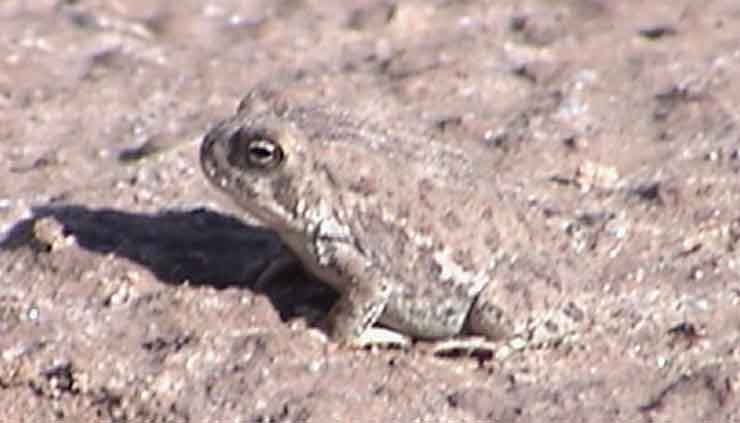
Toads
Sources: Stebbins, Robert, 1985, A Field Guide to Western Reptiles and Amphibians, Boston: Houghton Mifflin; Brennan, Thomas & Andrew Holycross, 2006, A Field Guide to Amphibians and Reptiles in Arizona, Az Game & Fish Dept.
Toads epitomize the condition of the "Amphibians", in other words they lead a "double life": they must first lay their soft eggs in water, the eggs are then fertilized by the male who releases sperm over them. The embryos then swim in water like fish, legless, propelling themselves by their tails and breathing through fish-like gills, before they metamorphose into tetrapods, losing their gills, developing legs and lungs. Below, what are probably a variety of toad (and frog) tadpoles, occupying a gradually declining side pool left from San Pedro River floods near Cascabel in August of 2004:
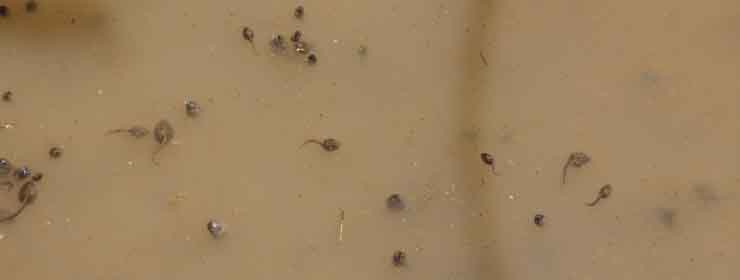
True toads, or "Bufos" (family Bufonidae) are found worldwide, and many can live under quite difficult conditions. Ours are "chunky, short-legged, and warty", distinguished from all our other tailless amphibians by their paratoid glands. Our other toads, "Spadefoots" (genus Scaphiopus), are found only in the New World and are distinguished from the Bufos by their catlike eyes (with vertical pupils) and a "single black, sharp-edged 'spade' on each hind foot" (Stebbins, p. 65)
We have done little in the way of photographing or distinguishing the toads on our Saguaro Juniper lands. This page is merely a beginning, like the lives of these youngsters encountered in one of our watertanks. Below left, a very small toad shares part of a mud flat with a creature of similar size -- a House Fly -- in the Big Tank, August 2004; at right, the same toad held up for its portrait. Click on each image to enlarge it.
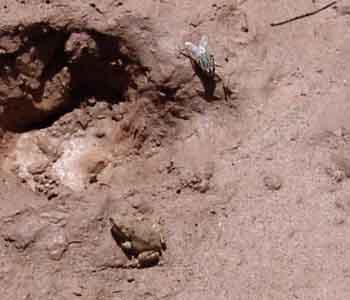 .....
.....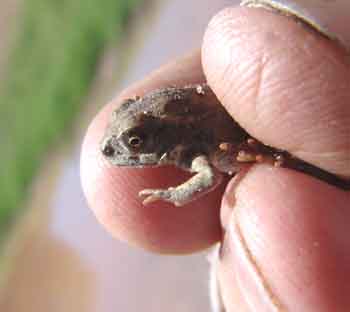
This small animal may well be the direct descendant of the one shown far below, at right -- an example of the Sonoran Desert Toad (Bufo alvarius), shown below feasting upon a fully grown Woodhouse Toad (Bufo woodhousei). Only the two hind limbs of the Woodhouse Toad are visible as it disappears into the larger toad's maw. Click on the image for a close-up.
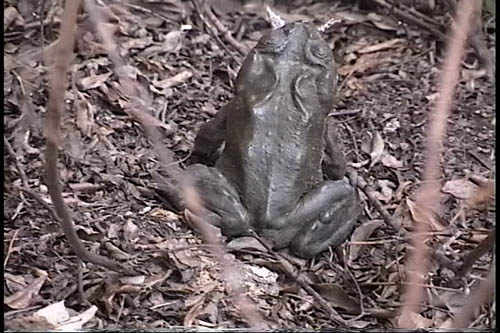
The large warts on the hind legs, contrasting with the smooth leg skin, are identifying features of this toad.
Here is an interesting contrast: on the left below, a well-fed Sonoran Toad at the height of the San Pedro Valley Monsoon, seen gobbling insects near illuminated windows at the Cascabel airport in late July 2003, and on the right, a hibernating Sonoran which had been accidentally brought to the surface by a roto-tiller working Bentonite into the Big Tank in November 1999. Note the difference in body tone in the two animals. Click on the image at left to enlarge. In both of these photos, note the enlarged whitish wart near the angle of the jaw (also an identifying feature), and note also the conspicuous grayish eardrum in the left-hand photos.
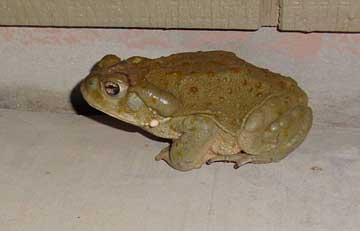 ..
..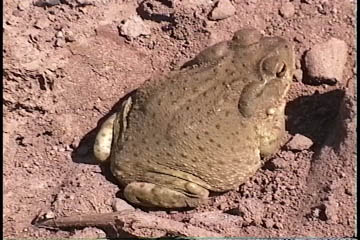
This largest of our Western toads extends from Central Arizona down into and along the coasts of Sonora. It ranges from riparian mountain canyons to arid creosote bush environments several miles from water. Its paratoid glands (most distinctive, behind the eye and above the eardrum, in the left-hand photos) secrete a sticky white poison which may kill dogs that attack it as prey. Mainly nocturnal, the Sonoran Desert Toad is most active from May to August, when it typically breeds. A voracious predator (see the images at the top), it will consume prey of daunting size and can move with surprising speed when trying to escape.
Red-spotted Toad (Bufo punctatus)
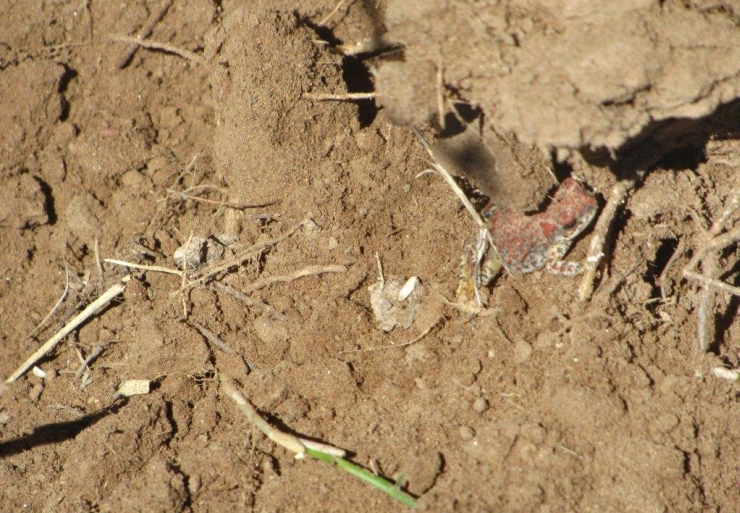
Naturalist Woody Hume uncovered this small toad while digging in the Mason pasture located along the San Pedro River Valley near Milepost 18. This creature is found in most parts of Arizona, being adapted to environments from our hottest and driest to some of our coldest forests (though it usually resides near permanent or frequent sources of water, breeding in such locations from the Grand Canyon to our local cattle tanks).
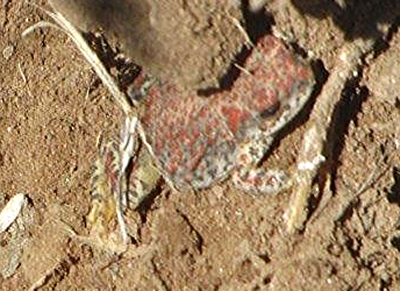
This toad, whose base color runs from pale gray to tan, typically has numerous small red tubercles scattered around the back of its body. It is distinguished from the Mexican Spadefoot (also red-spotted and found in our area) by its lack of the spadefoot, by the flatness of its head (the Spadefoot’s is rounder), and its visible paratoid glands behind the eyes, not clearly evident in this low-resolution image. Click on image to enlarge.
Back to Amphibians & Reptiles